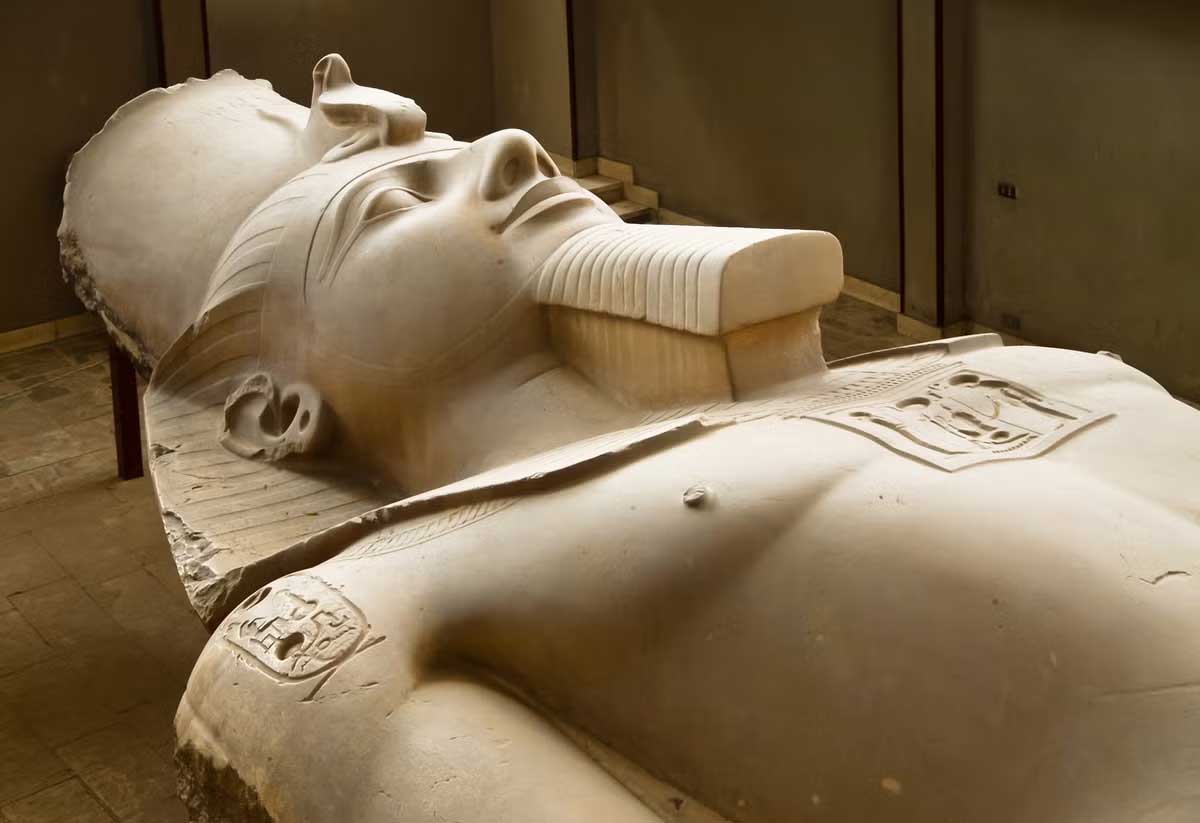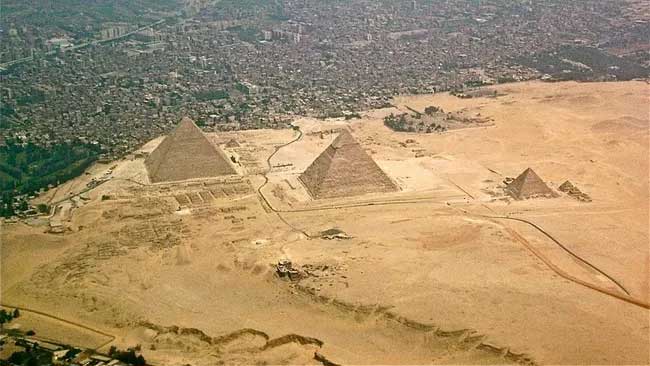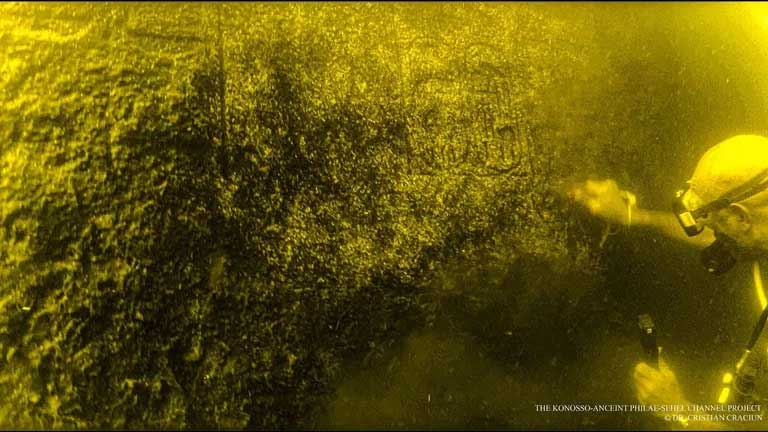It would seem that Egypt has been dug up and down, but archaeologists and scientists are finding new facts to study. For example, mysterious plasma bubbles have appeared above the pyramids; China has recorded these strange atmospheric phenomena using modern radar. Archaeologists have discovered a 3,000-year-old fort in the desert, which contains evidence of the pharaoh’s stay. The ancient Egyptians used so much copper that they polluted the harbor near the pyramids.
Mysterious plasma bubbles have appeared above the pyramids, and China has detected these strange atmospheric phenomena using advanced radar. A report from the China Institute of Geology and Geophysics says the country’s Low-Latitude Long-Range Ionospheric Radar (LARID) has detected plasma bubbles above the Midway Islands and the Great Pyramids of Egypt. This is not an alien encounter, but rather the detection of equatorial plasma bubbles (EPBs), which can occur in the Earth’s ionosphere.
The Global-scale Observations of the Limb and Disk (GOLD) mission is studying this atmospheric phenomenon.
For the first time, China’s powerful Low-Latitude Long-Range Ionospheric Radar (LARID) located on Hainan Island has detected plasma bubbles over the Midway Islands and the pyramids of Ancient Egypt.

These well-known space weather anomalies are called equatorial plasma bubbles (EPBs), and they occur in a region of the Earth’s atmosphere known as the ionosphere. Here, ultraviolet light from the sun knocks electrons out of atoms, creating a diffuse layer of ions that extends 50 to 400 miles above the surface. However, pockets of density irregularities sometimes form in the ionosphere, which deplete ions, which can significantly affect radio and satellite communications.
On August 27, the Institute of Geology and Geophysics, part of the Chinese Academy of Sciences, announced that LARID had detected these plasma bubbles during a solar storm in early November 2023. With a detection range of nearly 6,000 miles, LARID could detect these bubbles as far away as Hawaii in the east or Libya in the west by sending powerful electromagnetic waves into the ionosphere that could then be reflected over vast distances.
When this powerful wave hits the bubble, which can sometimes be hundreds of miles in diameter, the wave is reflected and then received by a set of transmitting and receiving antennas.
It’s a very different method of tracking these anomalies than NASA’s. The agency relies on the Global-scale Observations of the Limb and Disk (GOLD) mission — essentially a satellite appendage attached to a commercial satellite — to track potential EPBs across the Earth. While GOLD has often detected bubbles during periods of intense disturbances, such as solar storms and volcanic eruptions, the mission has also detected bubbles during relatively calm atmospheric moments, demonstrating that there’s much more to learn about these mysterious bubbles.
Archaeologists have discovered a 3,000-year-old desert fort that contains evidence of a pharaoh’s presence. The ancient structure contains unusual evidence of war and worship. Excavations at Tell el-Abqane in northwestern Egypt have uncovered a new military fortress containing hidden weapons, religious offerings and military barracks.
The mud-brick structure consists of two identical sections, some of which were used to store daily rations as soldiers defended the land from incursions by the Sea Peoples. The team found a bronze sword adorned with a carved inscription by Ramses II.
The Egyptian army had protection against the invasion of the Sea Peoples during the New Kingdom. And it included a long bronze sword with inscriptions of Ramesses II.
The latest information comes after Egypt’s Ministry of Tourism and Antiquities announced in a recent statement that it had discovered a military barracks and weapons storage complex in northwestern Egypt.
The Tell el-Abqain Fort, located in the center of the Haush Issa district in the Beheriya Governorate, is a collection of mud-brick architectural structures that were used to house everything from military personnel to weapons and food supplies for survival. A key base during the New Kingdom era from 1550 to 1070 BCE on the Western Military Road, the fort was designed to protect the northwestern border from attacks by the Libyan tribes and the Sea Peoples, a group of tribes that waged war in the eastern Mediterranean during the Late Bronze Age, according to Mohamed Ismail Khaled, secretary general of the Supreme Council for Archaeology.

Lansbrikae (Louis Leclerc)
The newly discovered fort had two nearly identically designed structures separated by a small corridor. Evidenced by large pottery remains that included fish and animal bones, Ayman Ashmawy, head of the Egyptian archaeology sector at the Supreme Council of Antiquities, confirmed the use of some of these areas as food storage areas for soldiers, including large individual granaries. Researchers also found cylindrical pot-ovens where their last meals were cooked centuries ago. Experts say the architectural design demonstrates how the Egyptians adapted their building designs and techniques to meet the practical needs of the user while working within the landscape.
But the excavation of the fort did more than shed light on the fort’s food supplies; the discovery also revealed a history of warfare and hunting. The archaeological team found a long bronze sword decorated with engravings of Ramses II, one of Egypt’s most famous pharaohs from the 1200s BC, along with additional weapons, hunting tools, and a host of personal items, both decorative and for hygiene, such as ivory tinsel, beads, and agate jars.
All of these finds were quite suitable for a fort that could house an army indefinitely, with enough supplies to meet its daily needs and to keep the army prepared to repel intruders such as the fearsome Sea Peoples, a “band of sea robbers” believed to have existed between 1276 and 1178 BC.
The excavations also uncovered a number of religious or spiritual finds. The team uncovered the burial of a cow, a symbol of power, abundance and prosperity, and two limestone blocks, one with a hieroglyphic inscription of King Ramses II, the other of an official named Bay. Other discoveries included a scarab engraved with the inscription: “Amun is the Lord of the Sky,” additional scarabs praising deities and flowers such as the lotus, half a bronze ring inscribed with “Amun Horakhty,” faience necklaces and a carnelian in the shape of a pomegranate flower.
Given that there was still plenty of material left to be found in the fort, it’s safe to assume that the soldiers stationed there had successfully completed their protective mission. But for one reason or another, the complex was abandoned and then lost to time — until now, when experts began digging into its past.
Ancient Egyptians used so much copper that they polluted a harbor near the pyramids, research shows. New geoarchaeological research suggests that metalworking in ancient Egypt led to significant pollution of a nearby port, Eos.org reports.
On a warm spring day in 2019, researchers were drilling beneath the city streets of Cairo. Just over a kilometer away, the Great Pyramid of Giza glimmered on the horizon. About 4,600 years ago, when workers were building the Great Pyramid, the current excavation site was on the sandy bottom of Khufu Harbor.
At this ancient harbour, the oldest known port in the world, researchers say they have discovered the first major case of human metal contamination. While the Giza necropolis is famous for its pyramids and shriveled mummies, a new study published in Geology offers unprecedented evidence of a largely undiscovered aspect of ancient Egyptian civilisation: sustained, centuries-long metalworking.
The discovery sheds light on life beyond ancient Egypt’s pharaonic and princely elite, the researchers say. “We’d like to know more about the 95 percent of people, not the elite,” said Alain Véron, a geochemist at France’s Aix-Marseille University. His sentiments echo those of Christophe Morhange, a geoarchaeologist at the same institution who has emphasized the importance of sedimentary deposits in reconstructing historical narratives.
“Precipitation is as important as monuments,” Morhange said, highlighting the often overlooked importance of the land beneath our feet.
Researchers used geochemical tracers to study metalworking activity around the ancient harbor of Khufu. Situated along a now-defunct branch of the Nile near the Giza Plateau, the harbor was important for the transport of materials and was home to a large copper tool industry. These tools, some of which workers alloyed with arsenic for added strength, included blades, chisels, and drills for working materials such as limestone, wood, and textiles. The researchers used inductively coupled plasma mass spectrometry (ICP-MS) to measure copper and arsenic levels, as well as aluminum, iron, and titanium, with six carbon-14 dates to establish a time frame.

New research suggests ancient Egyptians polluted the harbor near the Giza pyramids. Robster1983/Wikimedia Commons
The study traced the onset of metal contamination to around 3265 BCE, earlier than the researchers had previously thought. Contamination during this predynastic period suggests that human presence and metalworking at Giza began more than 200 years earlier than previously documented.
Although the researchers found direct evidence of predynastic civilization in only 13 tombs north of Giza, Morhange believes that the geoarchaeological record offers more clues. With so much focus on the pyramids and other tombs, he explained, previous researchers may have missed evidence of earlier occupation of the site.
“You find only what you seek,” he said.
The researchers found that metal pollution peaked around 2500 BCE during the construction of the late pyramids and persisted until 1000 BCE. “We found the oldest regional metal pollution ever recorded in the world,” Veron said. Copper levels during this period were “five to six times higher than natural background levels,” he continued, indicating significant local industrial activity.
Andrew Shortland, an archaeologist at Cranfield University in the UK who was not involved in the study, expressed concerns about the proposed timeline. “I don’t think six dates are enough,” he said, referring to the number of carbon-14 dates used.
However, Shortland acknowledged the study’s broader findings about human-caused metal pollution at Giza.
The study provided further insight into how the ancient Egyptians adapted to environmental challenges. As the Nile River receded and Khufu Harbor shrank, metalworking continued. When the Nile’s water level reached its lowest point around 2200 BCE—a period marred by civil unrest and grim rumors of cannibalism—metal pollution remained high, suggesting a resilient infrastructure and workforce.
Veron explained that the receding Nile initially provided opportunities for local communities. Previous palynological studies, the study of pollen grains, have shown that agricultural activity increased dramatically as the weakening Nile exposed fertile floodplains. Even when pyramid building at Giza ceased, metalworking likely persisted to support a thriving pastoral economy.
Dominic Weiss, a geochemist at Imperial College London, found the study “extremely well done and meticulously conducted.” Noting the appeal of popular sites like the Giza necropolis, he welcomed the new connection between geochemistry and history and the opportunity to shed light on the daily lives of ancient Egyptians.
“The chemical imprint of human activity remains and cannot be erased,” Veron said.






